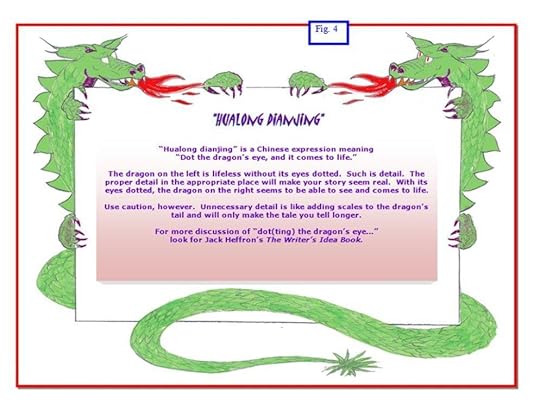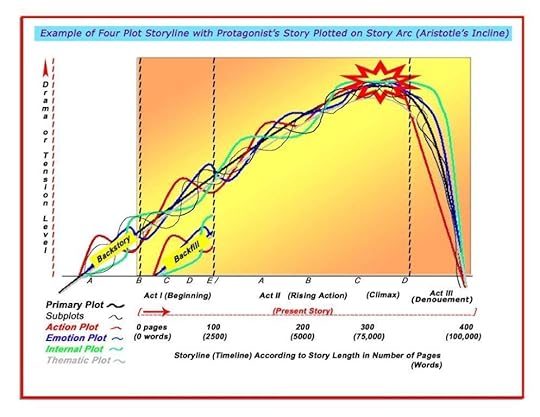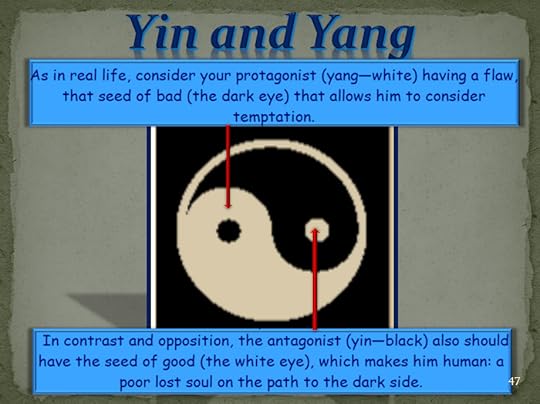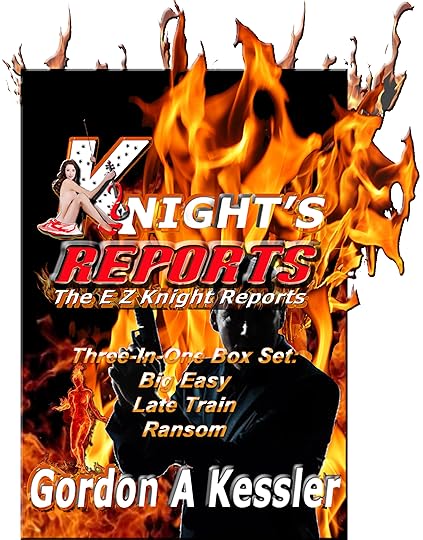Gordon A. Kessler's Blog, page 3
April 15, 2013
How About this Twist on the Old 3D Cover Idea?
“The E Z Knight Series” novels!
Filed under: Book Covers, Books on Sale, E Z Knight, EBooks & EPublishing, Kessler's Thrillers, Knight's Big Easy, Knight's Ransom, Readers' Interests, The "Knight Girls", Uncategorized Tagged: 3d book cover, 3D ebook cover, Action, Adventure, amazon, apple, eBook, ebooks, ePub, epublishing, indie author, indie publishing, indie writer, Joe Konrath, John Locke, smashwords.com


April 7, 2013
Book Reviews: John Locke Didn’t Do It This Way!
I posted this on our Indie Writers Alliance page, then I realized this might be important enough to wave it around on my author site, as well.
To my readers and fans, let me just tell you how very important it is for any author to get good, legitimate reviews for their books. If you give a book a good review, you’ve made the author’s day. On the other hand, if you give it a bad review, there will likely be gnashing of teeth. But even negative reviews are important to readers, if they’re honest–and, ultimately, that’s who reviews are for. Reviews are to help potential readers decide whether or not to buy and read a book. Reviews are good things for the consumers–for readers, the reason we write. Reviews with hurtful language, spoilers, negative because “I don’t read this genre, but I got this book for free”: those are the really lame reviews that no one needs.
Okay, so don’t even compare what I’m about to tell you to John Locke’s, “Hey, I sold over a million books in five months this way!” The following info and link is to help fellow indie authors hook up with potential reviewers in their book(s) genre(s).
What’s different? Locke said nothing about the main and now obviously secret ingredient in his plan: buying reviews! I’m not saying it’s wrong to buy reviews. I’d say it’s wrong if you’re buying positive reviews, fabricated reviews from folks who didn’t even read your book, left out the fact that you bought reviews when you go around bragging to other writers how you became so successful and left this very critical piece of the puzzle out. And then Mr. Locke sells us indies a guide-book about how we can do what he did with the most important part–the real key to his success–never mentioned! That’s ri-ight! He paid over $6,000 for 300 reviews. Now think of it, authors: paying three hundred people to go “buy” your book on Amazon over a few days’ time–the increased sales alone would shoot your title near the top of the rankings. Don’t you think if you’re giving these reviewer folks pretty good money to give a review, and there’s no real control over whether they really read the book or not, that they’ll likely give your book a good review? Especially since, if they give it a bad review, they might not be considered favorably for a chance to get paid to write review again!

Click the Image!
Anyway, check this out, fellow indies! For $67.00 BookRooster will distribute your book to a genre-targeted portion of their 3,000 plus reviewers, and they’ll keep working at it until you get ten reviews. They don’t promise those reviews will be positive. What are you paying for, then? Distribution of your book to reviewers. The reviewers themselves don’t get paid, but they do get to download your book for free. If you need reviews, this might just be a way to go.
Filed under: EBooks & EPublishing, Personal Views, Pet Peeves, Readers' Interests, Uncategorized, Writing Tagged: amazon, book reviews, eBook, ebook reviews, ebooks, ePub, epublishing, getting book reviews, indie author, indie ebook reviews, indie publishing, indie writer, Joe Konrath, John Locke, kindle, novel writing, promoting ebooks, Writing


March 30, 2013
Operation Paperback: Talk about a worthy cause for both author and reader!
I just signed up for Operation Paperback, and I’m going to give a bunch of my books to the women and men in uniform, serving our country overseas. This is what I call pay-it-forward in a big way. Imagine being able to entertain our troops as they defend our country. Join me and give them a little R&R–away from giving their all for us–inside a good book.
Here’s their site description and a link: http://www.operationpaperback.org/
“Operation Paperback is a non-profit organization incorporated in the State of Pennsylvania that collects gently used books nationwide and sends them to American troops overseas, as well as veterans and military families here at home. Since 1999, we have shipped over 1.9 million books to locations around the globe.
“Our service members and their families make sacrifices every day for our country. It takes so little to let them know that they are appreciated. When you donate to Operation Paperback, you will let America’s military know that you appreciate their service and their sacrifices.”
Filed under: Kessler's Thrillers, Knight's Big Easy, Knight's Ransom, Novel Writing Made Simple, Personal Views, Readers' Interests, Uncategorized Tagged: Action, Adventure, book give-away, books for troops, E Z Knight, entertain, Gordon Kessler, indie author, indie publishing, indie writer, our troops, pay-it-forward, suspense, Thriller


EPublishing Radio Interview
I was just interviewed about my writing career as well as ePublishing by nationally known radio personality and voice talent, Mike Lamb. The half-hour segment will air Sunday, March 31, between 1:00 and 2pm ET on WJML radio: http://www.WJML.com
Check it out!
But, if you don’t get a chance, you can catch it anytime afterwards on a podcast on Mike’s Internet radio website, at: www.MoneyRoom.com, and later I’ll post it right here!
Filed under: EBooks & EPublishing, Interviews, Personal Views, Readers' Interests, Seminars & Appearances, Writing Tagged: amazon, eBook, ePub, epublishing, indie author, indie publishing, indie writer, interview, John Locke, Mike Lamb, novel writing, promoting ebooks, radio, smashwords.com, Writing


February 6, 2013
Novel Writing Made Simple EBook is now FREE!
Novel Writing Made Simple — Seventh Edition EBook PDF is now FREE!

Novel Writing Made Simple (PDF) is now FREE!
Let’s talk about writing really great stories!
THE Book on Novel Writing.
An easy to understand study manual for the beginning novelist, a reference and review for the experienced fiction writer; Novel Writing Made Simple is a comprehensive guide to the novel-writing craft. Its straightforward approach breaks down the rules and conventions of one of the most revered and subjective of all creative arts to their simplest forms. This thorough text covers everything from storytelling basics to manuscript submission. If you have room for but one writing reference book beside your keyboard, Novel Writing Made Simple is the one to have–and it’s now FREE!
Novel Writing Made Simple (PDF) FREE!
Look for Novel Writing Made Simple in large-format (8.5″ x 11″) paperback on Amazon.com and Lulu.com.
Also available in eBook from Amazon.com (coming soon), Barnes & Noble, Lulu.com and iBooks (Apple iTunes).
THE Book for Novel Writers!

Dot the Dragon’s Eye and He Comes to Life!

Storyline: Modified Fichtian Curve

Yin & Yang; Female & Male, Bad & Good: Opposites
Novel Writing Made Simple (PDF) FREE!
Filed under: Books on Sale, EBooks & EPublishing, Novel Writing Made Simple, Welcome, Writing Tagged: eBook, ebooks, ePub, epublishing, indie author, indie publishing, indie writer, Novel, suspense, Writing


January 21, 2013
EBOOK ***Coming Attractions*** Contest!
The
EBOOK
***Coming Attractions***
Contest!
The BEST Indie EBook Novels Coming Soon To an EReader Near You!
A Writers’ Contest for Future Indie Writers!
The First Three Pages (750 words) of Fantastic Fiction
No Entry Fee!
Any genre (category)!
Simple rules! Submit:
Up to the first 750 words of you novel
Formatted in MS Word, with one-inch margins, double spaced, and in any very readable font;
No title page is necessary, and the author’s name may appear on the submission.
A synopsis/description of the work of no more than 250 words. We suggest including:
A brief pitch (perhaps up to fifty words—this is your grabber or elevator pitch);
A brief summary (this is the synopsis that you hope will sell your book and help it to become a bestseller—check out examples on Amazon)
Ensure your entry email includes author’s name and story genre (category).
*Entries cannot be presently published as eBooks on Amazon.
Entries will be judged on the author’s storytelling ability, ability to follow the contest submission’s very simple guidelines, and the judges’ opinions of marketability (sales potential).
What do you win?
The First Place entry:
Will be showcased on not only the Indie Writers Alliance blog /website but on Gordon Kessler’s author’s site, as well;
Will be linked to Amazon book page once ePublished.
The First Place entry will also receive:
Free eBook formatting for winning entry for Kindle & Nook (when ready, but must be requested within six months of contest deadline);
Free ePublishing phone consultation for uploading eBook to Amazon and Barnes and Noble, (when ready, but must be requested within six months of contest deadline);
Choice of print or eBook version of Novel Writing Made Simple or EBook Writing Made Simple!
Full, line-by-line edit of entry.
The First Place entry and five Runners Up:
1. Will be linked from Gordon’s and IWA’s sites to authors’ sites;
2. Will be listed on both Gordon’s and IWA’s sites with the stories’ synopses/books submitted for the contest;
3. Will have the books’ cover images or authors’ photos, if available, posted on IWA and Gordon Kessler’s blog/websites.
First 100 entries:
Will receive a free PDF version of Novel Writing Made Simple or EBook Writing Made Simple!
Will receive a single-paragraph summary including strengths and weaknesses of the entry as well as suggestions on how to improve the work (feedback will be sent in the format of an email by March 31, 2013).
Have a story opening? With nothing to lose, it’s a no-brainer: dust it off and send it in today!
Deadline: midnight PST, February 3, 2013 (by email date and time confirmation)
First round judging will be completed and finalists notified by February 11, 2013.
The EBook ***Coming Attractions*** Contest winners will be selected and posted on http://gordonkessler.com and http://writersmatrix.com/wordpress/ (Indie Writers Alliance’s blog/website).
The EBook ***Coming Attractions*** Contest is sponsored by Gordon A Kessler and the Indie Writers Alliance.
Send entries by email as a single attachment (synopsis and story opening), with “coming attractions” in the subject line, to:
Questions? Email Gordon with “question” in the subject line.
Filed under: Contests, EBooks & EPublishing, Novel Writing Made Simple, Writing Tagged: amazon, eBook, ebook contest, ebooks, ePub, epublishing, indie author, indie publishing, indie writer, kindle, Novel, novel writing, Writing, writing contest


January 13, 2013
Deep Point of View: Your Readers Deserve Close Psychic Distance!
Most writers understand the importance and conventions of point of view–but how many understand “deep POV,” a.k.a. psychic distance?
When John Gardner described psychic distance thirty years ago in his book The Art of Fiction, it seemed to get buried in this wonderful writing book. In the first read through, many new writers have trouble grasping all the elements Gardner discusses. For me, after putting hundreds of thousands of words on paper, I went back and reread it. That second time it was more than a light clicking on inside my head–more like a nuclear bomb.
As with all writing aspects, I believe that once understood, psychic distance can be used by the writer like a craftsperson might use a tool–like a woodworker, using a chisel in various amounts, varying angles and pressures to produce a desired effect. The writer should be aware of and understand both the tool and the effect.
Something I don’t believe Gardner goes into great depth about is how unwanted psychic distance can be created unknowingly by writers who describe a point of view character “hearing”, “seeing”, “watching”, an action in a scene, which pushes the reader out of the POV character’s head and forces that reader to imagine, from a distance, the POV character witnessing the action. For example:
Jim watched Zoya walk into the tavern, saunter to the bar and light up a cigarette.
instead of:
Zoya walked into the tavern, sauntered to the bar and lit up a cigarette.
In the second example, if this isn’t the first sentence of the scene, it’s not necessary to say “Jim watched …” since POV should already be established and the reader will know that Jim is the one witnessing this action. Also, the woman’s action seems more immediate if not filtered through Jim’s head before going to the reader. This makes a for a minimal psychic distance—the reader more easily immersed into the psyche of the viewpoint character and thus more likely to find empathy for that character.
That understood, if this is the first sentence in the scene, saying “Jim watched …” might be a better choice in order to establish POV for that scene and the reader shouldn’t need to be reminded whose POV it is after this opening line. Also, if the way Jim is watching is important to the scene, then the closeness of psychic distance might be forfeited or traded for a desired effect, for example:
Jim ogled the young woman as she sauntered into the tavern and up to the bar. Zoya was much more attractive than he’d expected, and he imagined the taste of her full lips as she lit up a cigarette and drew in the first puff.
Also, if the author has established POV in a scene, there is little need to use “thought tags”. In “deep point of view” the reader undersands that the narrated comments and descriptions are coming directly from the POV characters subjective mind–a.k.a. “indirect speech” or “free indirect speech” (see: http://en.wikipedia.org/wiki/Free_indirect_speech).
Understanding this aspect of psychic distance and using it as a tool can make a huge difference to the reader and to the success of a scene.
That’s my subjective view of this very important fiction writing aspect, and only further illustrates the beauty of this art, a subjective endeavor in which no two writers will ever find perfect agreement.
You can find a more thorough discussion on POV, psychic distance and other very important writing topices in my books Novel Writing Made Simple and EBook Writing Made Simple:
Below, you’ll find a great post by Emma Darwin examining and discussing John Gardner’s thoughts on the use of full character names, first names, last names and pronouns and how they affect “psychic distance”:
Psychic Distance: what it is and how to use it
Psychic Distance is a concept which John Gardner explores in his book The Art of Fiction, and I think it’s absolutely crucial, not difficult to understand, and not nearly talked about enough. You’ll also find it called Narrative Distance because, basically, it’s about where the narrative (and therefore the reader) stands, relative to a character. Another way of thinking of it is how far the reader is taken, by the narrator, inside the character’s head. Gardner breaks it down thus:
It was winter of the year 1853. A large man stepped out of a doorway.
Henry J. Warburton had never much cared for snowstorms.
Henry hated snowstorms.
God how he hated these damn snowstorms.
Snow. Under your collar, down inside your shoes, freezing and plugging up your miserable soul
And since sometimes it’s hard to see how this can equally well apply in first person, and to a less realist project, I’ve done a version which does both. Watch how in this version still has a sense of narrator, and a character, but this time they just happen to be the same persona:
In the far-off days of Uther Pendragon, witches stalked the earth.
Every village had its witch, and we feared or consulted her according to how desperate we were.
When I was a child Mistress Margit frightened me, and when she walked down the street the big ones would shout “Here comes Old Margit!”, while I hid and crossed myself.
And here came Old Margit, with her ragged clothes and her big black cat, and I shivered and prayed because St Mary would save me, wouldn’t she?
Margit’s coming and her cloak like little demons dancing and what’ll I do – mustn’t catch her eye – hide in the ditch cold and wet but Black Peter will see me – Mother Mary save me, he’ll look at you and then Margit can see into your mind and plant demons in there and…
Obviously it’s really a spectrum, not separate stages, but you can see what this is about, can’t you?
1) is remote and objective. It has a nice ‘Once upon a time’ feel to it but doesn’t give us any sense of one or more particular characters in the story as a person with thoughts and feelings: a consciousness. It tells us a lot about where we are and what’s happening, but if it stays at this level we might not care much about this person, and it limits the writer’s scope for exploring how he experiences the world and himself. It’s the subtitle across the beginning of the film that locates us.
2) is bringing in some particulars: the narrator is telling us (informing us) about a place, and an individual and their emotions. Think of it as a wide-angle shot of a village, or a voice-over.
3) is more particular, more personalised still: the narrator’s voice is beginning to show us (evoke for us) the particular character and their experience. This is, to quote James Wood’s How Fiction Works, “standard realist narrative”: in other words, the predominant mode of the vast majority of fiction: the narrator is in control, taking us into the experience of this world and that of individual characters and quoting speech directly. A medium shot where we can identify individuals.
4) is beginning to colour the voice of the narrator with the the vocabulary and point-of-view of the character. Shorthand for this is that we’re going further into the character’s head, courtesy of free indirect style, as invented by Jane Austen: “God how he hated … ” and “St Mary would save me, wouldn’t she?”. But, of course, we’re losing touch with anything that the character doesn’t see or think, or any other ways of saying it. In a movie – which can’t go inside heads – we could see a face, and try to read what it’s feeling.
5) is tight close-up and subjective: almost a brain download, with thoughts and sensory information all jumbled up. In Wood’s terms this is stream of conciousness. The character’s voice is wholly present and the narrator’s voice has faded out. It’s extremely expressive of this person’s character and situation. But if we stay at this level we may never understand what’s going on, and it limits the writer’s scope for moving between different characters and their consciousness.
Gardner’s point is not that one is better than the other, or that you have to stick to only one. Indeed, it would be a mistake if you did; it can make the piece very monotonous, specially if you stick at the (1)-(2) end. Just as good novels have a rhythm of action and reflection, so they have a rhythm of intimacy and distance. So I’ve extended Gardner’s concept to think in terms of the psychic range of a piece, from the closest to the furthest that it covers. And that’s why it’s important to be able to spot (roughly) what the psychic distance is at any one point. If you understand the possibilities of the different distances to control the reader’s involvement with the character and the story, then you’ll not only be training your instinct for when to stand back and when to close in, but you’ll also get better at spotting and fixing things when they’re not working.
My own lightbulb moment about this stuff happened when I saw that John Gardner’s Psychic Distance fits beautifully with Showing and Telling, (or as I like to call it, Informing and Evoking): Gardner’s (1) is the Telliest Tell, his (5) is the Showiest Show. And they both fit together with James Wood’s dissection of the different modes of narrative, and with another fascinating discussion by David Jauss: “From Long-Shots to X-rays” (that’s the full article: do read it.)
And notice, too, that although the character’s voice starts coming through as we get closer in to their head in the (4) and (5) sort of levels, the narrative has its own voice however “distant” the long-shot is. What could be stronger than In the far-off days of Uther Pendragon, witches stalked the earth? I’ve blogged more about voice here: the important thing for this post is to understand that fiction is polyvocal. Different voices – the narrator’s and the characters’ – combine to make the narrative, interpenetrating each other to different degrees depending on the psychic distance at that moment.
It’s also helpful to bear in mind that jumping straight from, say, (1) to (5), may risk leaving the reader behind. If you wrote: It was winter of the year 1853. A large man stepped out of a doorway. Snow. Under your collar, down inside your shoes, freezing and plugging up your miserable soul, there’d be nothing to tell the reader that the man we were shown stepping from a doorway is the same as this person with snow down his (her?) neck. Competent readers will make the assumption, but everything they read till their assumption is confirmed is, as it were, provisional, and means they can’t be so involved with the story. Other readers, not feeling secure in the world of the story and the line of the narrative, may give up. So be aware of this: either work your way by stages from, say, (1) to (3) to (5), or make sure you give the reader some handholds, so that you keep them with you at all times.
Understanding psychic distance is also the key to working with a moving point of view. It’s obvious that even if you limit your narrative to a single point of view, how far inside your character’s head you take the reader will vary. If your third-person narrative moves between several points-of-view within a chapter, say, then you have to start coping with the transitions. Many beginner writers are guilty of of “head-hopping”, which is switching points-of-view too often and too abruptly. But it’s not necessarily that the transitions happen too often (though it may be, and some teachers and editors are very doctrinaire about it), but that you haven’t handled them properly. Handle them properly, and you’ll find that said teachers and editors may not even notice, let alone disapprove. If you want to know more, have a look at my post on Moving Point of View, which is part of the big series on Narrators and Point of View.
So, next time you’re reading some fiction, have a look at how the author handles psychic distance: what range they use, and how and why they move to and fro within the range. Have a think about how that affects the way you experience the piece. If it’s told from more than one point-of-view, how do the transitions between different points of view interact with the psychic distance? Doing this will help to train your intuition about this stuff for your own work. And if you want an example of a lovely story which is pure 5, Jane Gardam’s ‘The Great, Grand Soap-Water Kick’, in her collection The Sidmouth Letters, is pure joy. But it’s not an easy trick to pull off.
You’ll find Emma Darwins blog at:
http://emmadarwin.typepad.com/thisitchofwriting/
Filed under: EBooks & EPublishing, Novel Writing Made Simple, Personal Views, Writing Tagged: fiction writing, point of view, POV, psychic distance, viewpoint


November 5, 2012
E Z Knight Versus Your Favorite Fast Food Customer Service Engineer.
(With Russian beauty Zoya & E Z’s golden retriever Jazzy Brass)
Excerpt from KNIGHT’S RANSOM, near the end of Chapter 12
© 2012 by Gordon A Kessler
Available at:
http://www.amazon.com/dp/B007F08MU8
It was 1:00 p.m., and Zoya, Jazzy Brass and I were getting hungry. While looking for an In-N-Out Burger or maybe a Del Taco, I checked my cell phone video to see if I’d gotten anything useful from just prior to our shootout. It was nothing but blurred gun barrels — completely useless.
We couldn’t find any of the more popular fast-food chain restaurants — usually you find them everywhere you look in SoCal. Finally Zoya pulled into one I hadn’t tried before, a Burger Bender. We ordered three cheeseburgers, fries and drinks. Jazzy loved chicken nuggets, but they weren’t on the menu. She’d have to make due. I promised her next time we’d find a Wendy’s, and she could have it her way. It was hard telling when she’d get back on her normal diet of dry dog food and an occasional spoon of pumpkin or slice of apple.
I gave Zoya a twenty-dollar bill and she paid the kid at the window. He didn’t look like a high school student, had to be at least twenty, hair spiked, with body piercings and tattoos. Jada, my young friend back at the marina, has a similar look. But I soon found out that she wears it with a hell of a lot more personality.
The young man, obviously a career fast-food customer-service engineer, dumped the change into Zoya’s hands.
Don’t they teach kids to count back change anymore?
I figured by the looks of him, he’d have a heck of a time counting back more than a nickel anyway.
He gave us the drinks.
They’d overflown their lids, and soda was dripping down the sides of the cups.
We asked for napkins.
He stuck a wad of them out the window.
A minute later, he handed us the bag of food.
We had to ask for straws.
He passed us half a dozen for two drinks.
We had to ask for ketchup.
He handed us mayonnaise instead.
I told him we wanted ketchup not mayonnaise.
He gave us a fistful, without reply.
We asked if there was salt in the bag.
He said, “No.”
We waited. Ten seconds later, I asked, “Well, can we have some?”
He didn’t say anything, but grabbed a handful of the tiny salt packets and stuck them out the window. At least a half dozen fell to the driveway beside the car door.
Zoya cupped her hands to receive the rest. He’d passed us enough salt to season every potato in Idaho, let alone two orders of French fries.
At that point, I considered pulling Zoya’s Mach 10 out from under the seat, pointing it at him and informing him that I was a trained assassin and had snuffed more people than he had stainless steel rings on his face and dick — there were at least twenty on his face alone.
Instead, I swallowed the venom surging in my throat, and we thanked him.
Then…and this is the kicker — what do you think the little shit said in return?
Come on, guess?
He said, “No problem.”
I don’t know that you’ve noticed, but my day began two popcorn farts less than great, and it was turning out three root canals and a kidney stone more than terrible.
I was stressed. I’d had a bad day. My head was about to explode from the pressure building inside. My good nature was stretched across my face like a two-bit condom over a pineapple — let’s say it developed a few holes.
To start with, first thing this morning, I get the finger from an old woman. That alone would ruin many a man’s day. But then I discover my goddaughter has been kidnapped by people who want me dead; a boat blows up that was supposed to have been mine; I find a good friend beaten into hamburger by guys trying to kill me; I get shot at; I nearly fall off a cliff; I have to kick a big bald guy’s ass; and then, to top it off, I only get half a BJ before finding out I’m being setup to be murdered.
Okay, that was just this morning. Next, the goombas who took a pot-shot at me come back and riddle my beautiful classic muscle car full of holes. I have to leave it in a heap of smashed up, smoldering metal because the cops are coming and, if I stick around, they’ll arrest me, and I’ll go back to prison.
So far today, I’d done nothing wrong — so far.
And then the kid at the fast-food window says, “No problem,” in response to our polite “thank you” without so much as a glance at us.
* * *
I stretch over Jazzy and Zoya to the little convertible’s driver side, get a foothold on the center console, and then reach into the drive-thru window. Jazzy and Zoya lean out of my way.
With my fists full of the server’s uniform shirt, I pull him to me and our noses touch.
“All right, booger-eater; listen to me this one time.” I start low and slow. “Your job is to wait on us; provide us with courteous service and a quality meal,” I say, my voice coming out louder, words faster. “We; your customers — the reason you even have a job — say ‘thank you.‘ And how do you answer? With a smile and a respectful ‘you’re welcome — thank you for your business. Please come again,’ right?”
My eyes are bugging, spittle comes out unintentionally with my elevated words.
“No-o. You say,” I whine with a sneer in exaggerated imitation, “‘No problem,’ as if you feel the need to tell me it wasn’t too damn far out of your way for you to do the job you’re being paid to do —”
I take a deep breath, “— instead of what you’d be doing if we hadn’t come to your little window: sitting on your dumb ass, atop a box of frozen beef and sawdust patties, listening to gangster rap while popping pimples with one hand and rubbing your balls like they’re Aladdin’s lamp and you’re wishing you had something more than a three-inch pecker with the other.
“No problem? You say no problem to your neighbor when you pull a turd out of his toilet that got stuck sideways and clogged it up. You say no problem when you stop and fix a stranger’s flat tire in the rain, even though you’re going to be late for work. You say no problem when the guy with no arms standing beside you at the urinal asks you to shake the dew off his lily and put it back in his pants for him — that’s when you say, no freaking problem!”
I’m glaring at him. He’s gaping back, as are Zoya, Jazzy, the burger joint employees and the few customers who can see me from the inside.
“No problem?” I ask quietly, but with a ragged edge. My next words come out from between my barred teeth. “Of course it was no damn problem, you little freak!”
The kid is in shock. He finally stutters, “Yu-you’re…wu-welcome — s-sir!”
“There. Was that so goddamn hard?”
I let him go, push off and slip back into my seat without looking at him. I answer, “No problem.”
Zoya, with her heavy Russian accent, says, “Have … nice … day!” and we pull away.
* * *
I took a deep breath and within five minutes I was feeling pretty good.
Filed under: E Z Knight, Jazzy Brass, Knight's Ransom, Personal Views, Pet Peeves, Readers' Interests, The "Knight Girls", Witticisms Tagged: Action, Adventure, amazon, apple, author, E Z Knight, eBook, ebooks, golden retriever, Gordon Kessler, ibooks, indie author, indie writer, Jazzy Brass, kindle, Knight's Ransom, Novel, promoting ebooks, suspense, Thriller


October 1, 2012
KNIGHT’S LATE TRAIN has arrived! (and KNIGHT’S REPORTS is on it’s caboose)
With E Z Knight, if a mountain gets in your way, you don’t go around it, you blow it up.
From flying a helicopter through a blinding mountain blizzard to running down a blazing train to Hell, E Z Knight is tested more than ever in Knight’s Late Train — and somewhere in between he discovers an easy way to join the Mile High Club.
When Doc Knight and his train go missing in a Colorado blizzard, E Z must brave the storm to find his father. In the process, he discovers Doc was involved in something more than conducting trains through the mountains. A hazardous materials train is loaded with highly toxic and explosive gas with a yield that could rival the Hiroshima A-bomb, as well as a yellowcake Betty Crocker wouldn’t even think about making. The Thundertrain is headed for Denver, and the madman at the controls is bent on derailing the hazmat freight cars where they will cause the very highest body count. Hundreds of thousands of lives are at stake.
E Z enlists the help of sexy railroad conductor Rillie Bee Wilde, and finds out she’s as feral as her name. She takes him higher than he could ever reach in their helicopter. Soon, they find out who wins when hundreds of tons of locomotive meet a fragile whirlybird and a battle against two dozen mercenaries is waged in the dangerous Slaughterhouse Train Yard.
With the Thundertrain only minutes from killing tens of thousands of innocent citizens, E Z must decide whether to save his father and children, or to try to stop a team of mercenaries from blowing the “Mile High City” to Hell.
The only way to do both is to move a mountain.
Knight’s Late Train is an episode of the standalone novels of ”The E Z Knight Reports” series; a sexy, humorous and irreverent series as well as a somewhat realistic and poignant look at the darker side of life, crime and the human condition.
With a modern-day, ramped up “The Rockford Files”/”Magnum PI” feel, a Jack Bauer-capable hero and a “24″ pace, this series consists of standalone, page-thrumming novels.
“The E Z Knight Reports” has a special section on the author’s website and blog (gordonkessler.com) with info on each of the books, E Z Knight, Jazzy Brass and the “Knight Girls”. You’ll also find information about the author and his other novels and works.
If you enjoy best-selling action/adventure thriller authors like Don Winslow and Clive Cussler, as well as some of the best thrillers in eBooks by indie authors like John Locke and JA Konrath, you’ll love Knight’s Big Easy!
KNIGHT’S REPORTS — Box Set, Your Three Favorite E Z Knight Books Bundled (The E Z Knight Reporst)

Filed under: Book Covers, Books on Sale, E Z Knight, EBooks & EPublishing, Jazzy Brass, Knight's Big Easy, Knight's Ransom, Readers' Interests, Uncategorized Tagged: Action, Adventure, amazon, E Z Knight, eBook, ebooks, epublishing, Gordon Kessler, kindle, Mystery, suspense, Thriller


September 13, 2012
Dog Park for Toddlers? How about crossing the track during the Indie 500?
It happened again today. A small child was hurt.
There are a lot of really great young parents out there. They love their children dearly and only want what’s the very best for them. Sometimes they don’t think things through before they do them, deciding, “Oh, how much fun it would be to take Junior to …” Some folks who haven’t been to a dog park have no idea what goes on there.
Well, here’s your warning, good-intentioned but inexperienced parents: what goes on at a dog park is utter chaos!
What? Chaos at a dog park? Someone should do something! Someone should enforce order so that all dogs walk, not run; lick, not play bite; romp and play like kiddies and not run amok and wrestle like … well, like — dogs!
If you’ve been to a dog park, you know that most of the animals are out there just having a great time. Even my sweet Jazzy Brass, one of the most pleasant dogs you’ll ever meet, gets a little nuts. It’s the dogs’ place to be dogs, to do what dogs do. They want to chase each other, play bite and wrestle. There are small dogs, and huge dogs, and as long as the “alpha” male or female doesn’t come out in them, the time spent in the park can be a blast for both dogs and their caregivers.
having a great time. Even my sweet Jazzy Brass, one of the most pleasant dogs you’ll ever meet, gets a little nuts. It’s the dogs’ place to be dogs, to do what dogs do. They want to chase each other, play bite and wrestle. There are small dogs, and huge dogs, and as long as the “alpha” male or female doesn’t come out in them, the time spent in the park can be a blast for both dogs and their caregivers.
But, if you’ve visited one of these fun places more than a couple of times, you’ve most likely seen some little accidents, sometimes not so little. Adults have even been known to get mowed down by dogs being dogs. These dogs don’t watch where they’re running, they’re just enjoying the chaos at the time. A person can easily get hurt, if they’re not keeping an eye out. The canines are excited, they’re letting off steam. You’re the cheerleader when you’re at the park, and your beloved companion is the player. If you’re a smart cheerleader, you don’t go onto the playing field in the middle of a game without being sure you won’t get trampled.
As soon as I saw it, I knew there would be trouble. A young mother with two small dogs and a medium-size one on leashes had entered the park’s main gate with a toddler in her arms. Hmmm. Obviously, she was thinking of how much fun was about to be had, but not considering she was leading three primed and ready rugby players onto the field of a very active game in progress. Within five seconds, she was down on the large concrete entryway, and she had dropped her little girl face first onto the hard surface, as well.
What could I do except run to her and try to keep the excited pack of dogs that quickly gathered away from mother and screaming child while they attempted to recover and find their legs?
Damn it! What a shame for the little girl who ended up with a bloody chin and a huge knot on her forehead. Accidents happen. This young mother certainly would have never risked her child’s wellbeing had she actually considered the danger.
It’s one of my pet peeves and this is a warning to others, old and young, short and tall. Dog parks are for dogs to play and have fun — to be dogs. It’s not a place for an overly aggressive dog. It’s not a place for elderly who can’t move out of the way of a large pack running at full speed. It’s not a place for a toddler even with close supervision or in a stroller. Sure, it’d be fun to see Junior reacting to all the nice little puppies. How about keeping Junior outside the fence? Here’s an idea; what about taking Junior to a pet store (the puppy mills that supply them are a whole other story)? Even better, take Junior to see all the really cute doggies and kitties at the local animal shelter!
Please stop and think. Don’t bring your small child inside the gate of any dog park. And, when you go with your best friend and constant companion, keep on your toes and be ready for a great time!
Filed under: Jazzy Brass, Personal Views, Pet Peeves, Readers' Interests Tagged: dog park, dog play, golden retriever, jazzy, Jazzy Brass, pet peeve, toddler safety, young children










